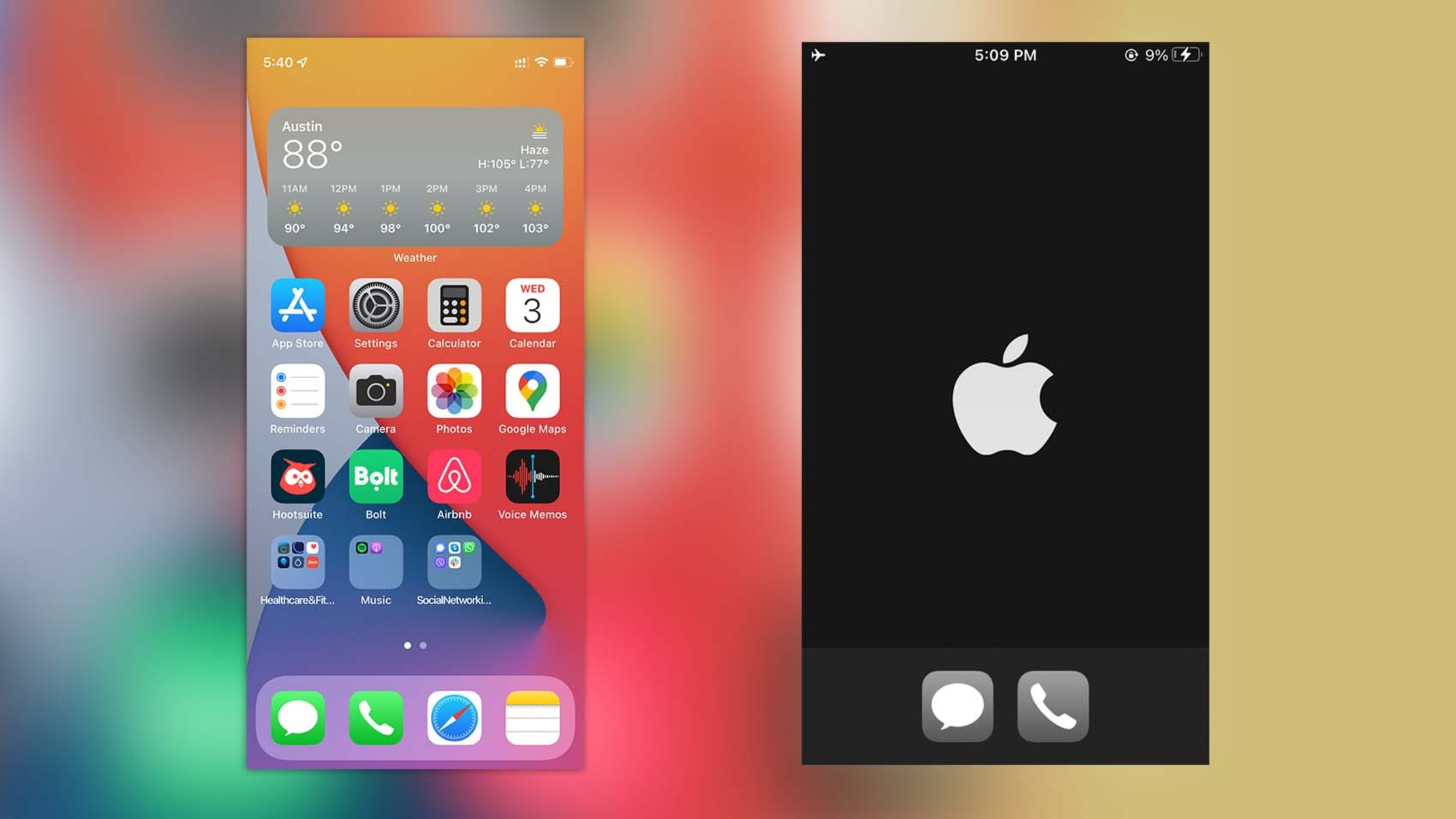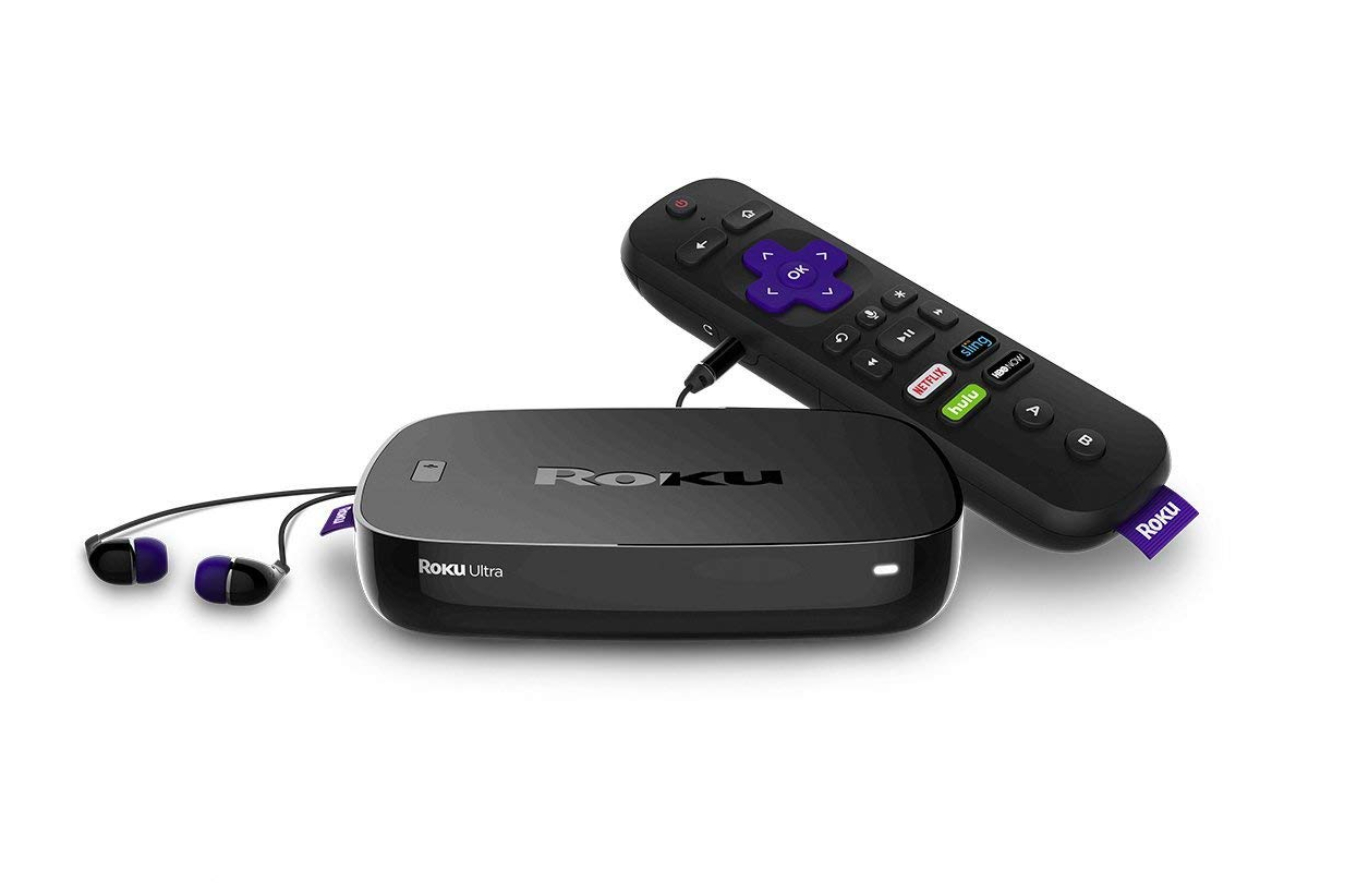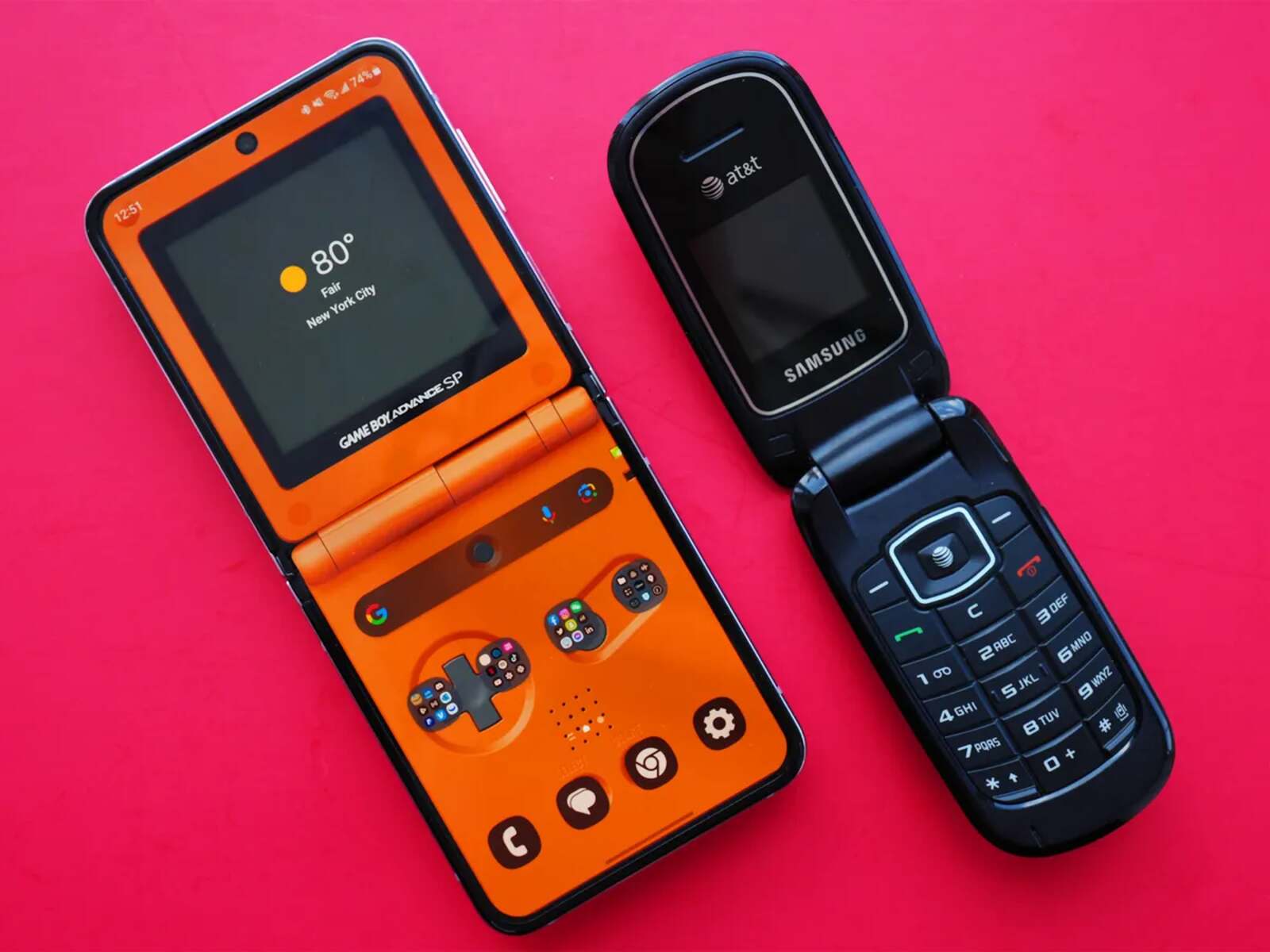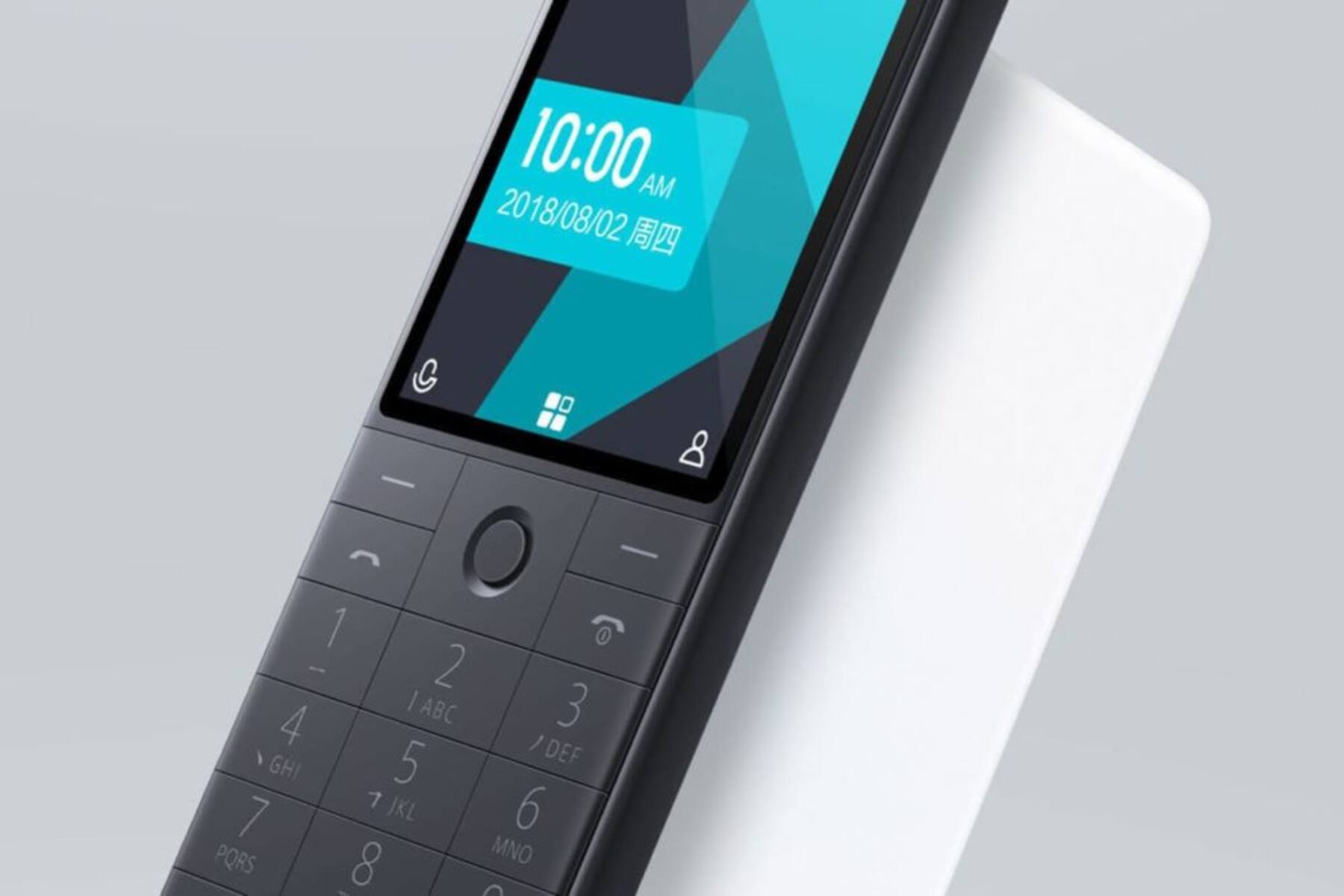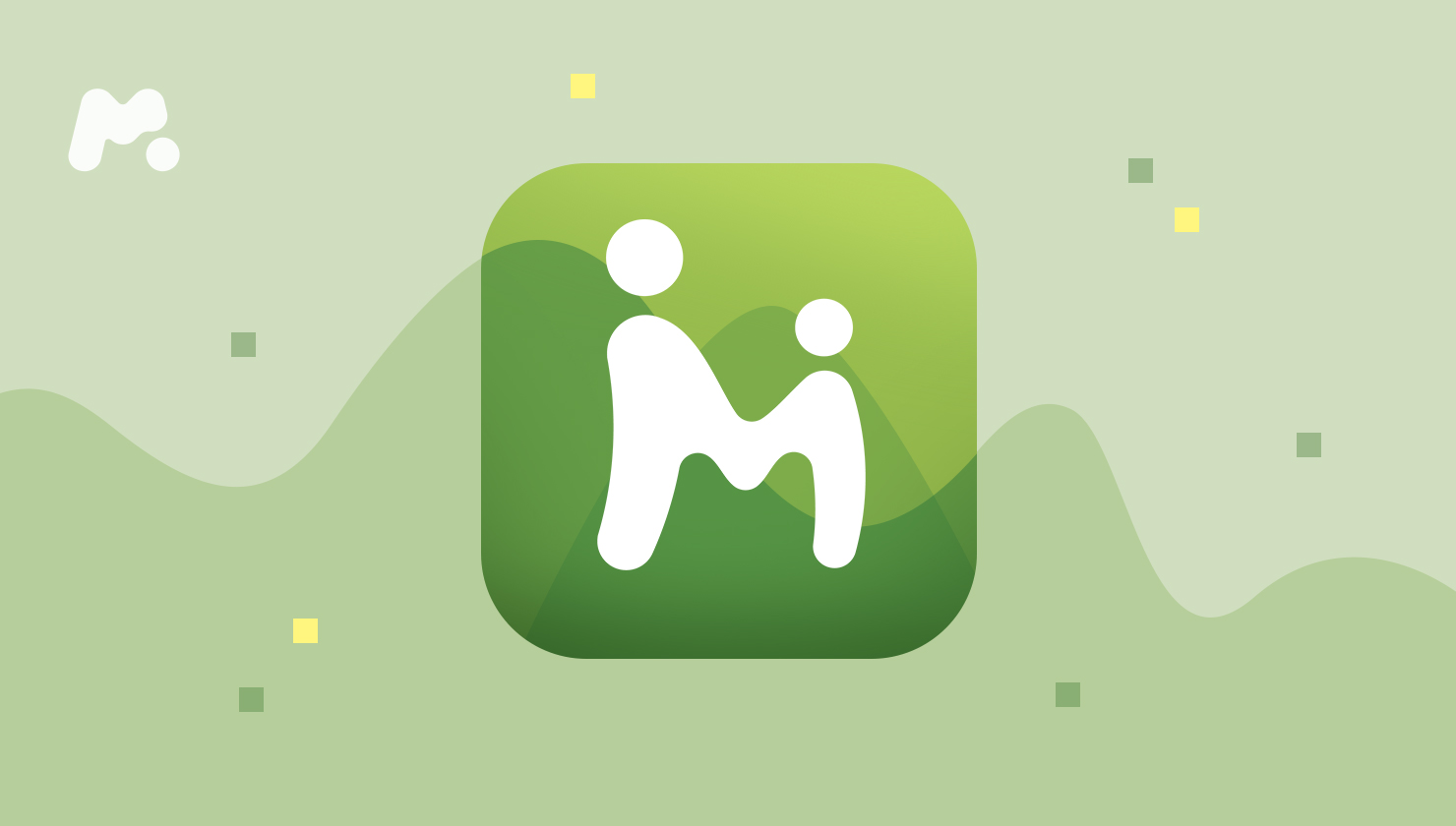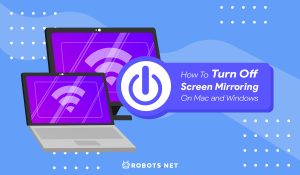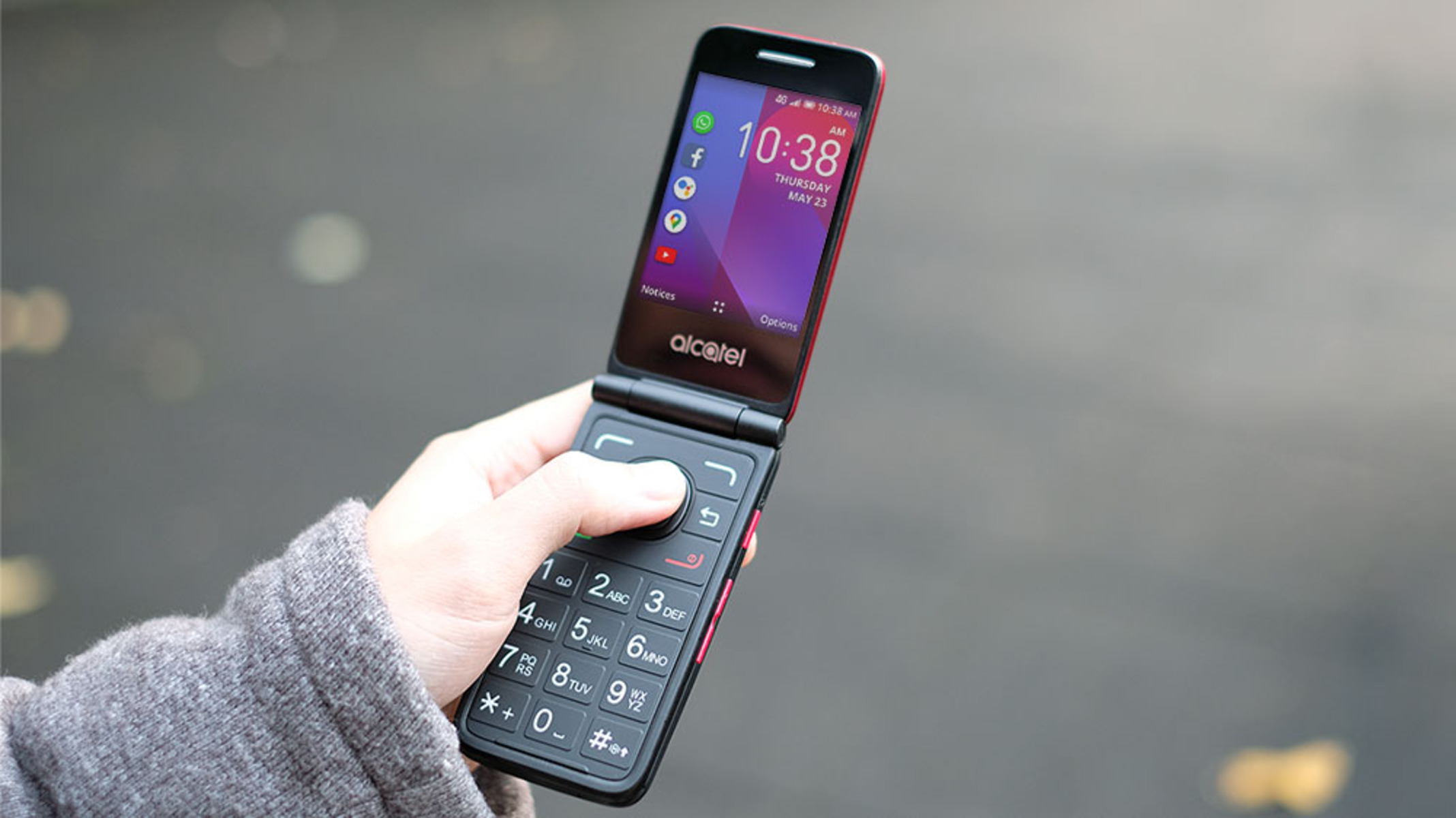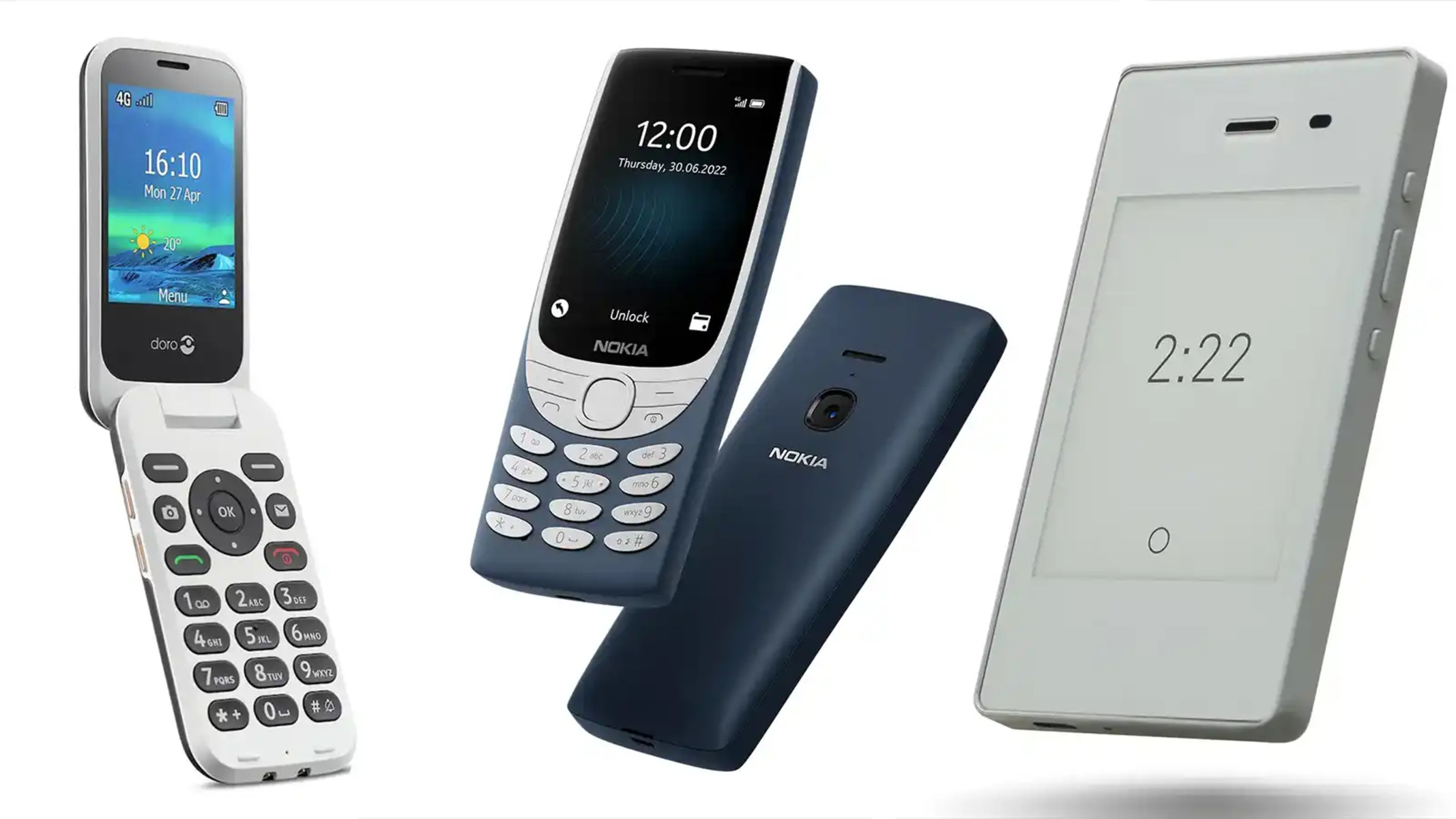Introduction
Do you find yourself constantly glued to your smartphone, mindlessly scrolling through social media feeds, and feeling overwhelmed by notifications and distractions? If so, you’re not alone. The modern era has brought us incredible advancements in technology, but it has also led to an increase in screen time and a constant need for connectivity.
Fortunately, there is a growing movement towards embracing simplicity and finding a healthier balance with our devices. One popular approach is to turn your smartphone into a “dumb phone,” a term used to describe a device with limited functionality, focusing on the essential features.
By transforming your smartphone into a dumb phone, you can regain control over your digital habits, reduce distractions, and improve your overall well-being. In this article, we will explore ten steps that you can take to turn your smartphone into a dumb phone and reclaim a more mindful and intentional relationship with technology.
Before we dive into the steps, it’s important to note that the goal here is not to reject technology entirely. Instead, it’s about finding a healthy balance and using our smartphones as tools rather than allowing them to dominate our lives.
Now, let’s begin the journey towards a simpler, more focused, and less distracting smartphone experience.
Step 1: Evaluate your phone usage
The first step in turning your smartphone into a dumb phone is to evaluate your current phone usage. Take a moment to reflect on how much time you spend on your device, what activities consume most of your screen time, and how these habits impact your daily life.
Ask yourself questions like:
- Do you spend excessive amounts of time on social media?
- Are you constantly checking email or messaging apps?
- Do you find yourself mindlessly scrolling through news articles or videos?
By being honest about your phone habits, you can identify areas where you may be wasting time or being distracted from more meaningful activities.
Next, set clear goals for what you want to achieve by turning your smartphone into a dumb phone. It could be to reduce screen time, focus on productivity, or simply be more present in your daily life. Having a clear purpose will motivate you throughout the process.
Now, it’s time to assess the apps on your device. Take a critical look at the ones you use frequently and ask yourself if they truly add value to your life. Delete any apps that are no longer necessary or that contribute to distractions.
Remember, the goal is to create a more streamlined and intentional smartphone experience, so be mindful of the apps you choose to keep or uninstall.
As you evaluate your phone usage, keep in mind that turning your smartphone into a dumb phone doesn’t mean you have to eliminate all forms of entertainment or communication. It’s about finding a balance that works for you and aligns with your goals.
Now that you’ve evaluated your phone usage, it’s time to move on to the next step: uninstalling unnecessary apps.
Step 2: Uninstall unnecessary apps
Now that you have evaluated your phone usage, it’s time to take action and start uninstalling unnecessary apps. Many of us have a habit of downloading various apps that we rarely use or that no longer serve a purpose in our lives.
Begin by going through your app drawer or home screen and identify the apps that you rarely use or no longer find value in. These could be games, social media platforms, or any other app that distracts you or takes up unnecessary space on your phone.
It can be difficult to let go of certain apps, especially if you have become accustomed to using them regularly. However, remind yourself of your goal to turn your smartphone into a more focused and intentional device.
Consider the following criteria when deciding which apps to uninstall:
- Frequency of use: If you haven’t used an app in weeks or months, it’s likely that you can live without it.
- Distraction factor: Are there certain apps that continually distract you from important tasks or meaningful activities?
- Value and purpose: Do the apps align with your goals and contribute to a more productive or mindful smartphone experience?
Once you have identified the unnecessary apps, proceed to uninstall them from your device. This process may vary depending on your smartphone’s operating system, but typically, you can long-press the app icon and select the option to uninstall or remove it.
By removing unnecessary apps, you free up storage space on your device and reduce visual clutter on your home screen. This not only improves the performance of your smartphone but also helps you stay focused on the essential apps and functions.
Remember, uninstalling apps doesn’t mean you can never use them again. If you find that you genuinely need a particular app in the future, you can always reinstall it. The key is to be intentional about the apps you choose to have on your device.
With unnecessary apps removed, you can now move forward to the next step: disabling push notifications.
Step 3: Disable push notifications
Push notifications can be a constant source of distraction, constantly pulling your attention away from what’s important. To create a more focused smartphone experience, it’s crucial to disable push notifications for unnecessary apps.
Start by reviewing the notifications settings on your device. You can usually find these in the settings menu or by long-pressing the app icon and accessing the app info.
Go through each app and ask yourself:
- Does this app’s notifications add value to my life?
- Am I required to immediately respond or take action upon receiving a notification from this app?
- Does this app’s notifications constantly interrupt my workflow or daily activities?
For apps that do not require immediate attention or do not align with your goals, disable their push notifications. This will help you regain control over your smartphone and prevent unnecessary interruptions.
However, be mindful of essential apps that you rely on for important notifications, such as messaging apps or email. Only disable notifications that do not serve a crucial purpose in your life.
Remember, the goal here is not to isolate yourself from the world or miss out on important information. It’s about reducing distractions and being intentional about the notifications you allow on your device.
In addition to disabling push notifications, consider scheduling specific times in your day to check and respond to messages, emails, and other notifications. By doing so, you can avoid constantly checking your device and maintain better focus on your tasks or activities.
With push notifications disabled for unnecessary apps, you can now move forward to the next step: turning off data and Wi-Fi.
Step 4: Turn off data and Wi-Fi
In the quest to create a distraction-free smartphone experience, turning off data and Wi-Fi can be incredibly helpful. By disconnecting from the internet, you eliminate the constant temptation to browse the web, check social media, or fall into the rabbit hole of online distractions.
Start by assessing your daily routine and identifying times when you can afford to be disconnected from the internet. This could be during work hours, study sessions, meal times, or when engaging in activities that require your full attention.
Once you’ve decided on specific time periods, you can turn off your data and Wi-Fi connections. On most smartphones, you can do this by swiping down from the top of your screen to access the quick settings menu. From there, find the Wi-Fi and data symbols and tap on them to disable the connections.
By disconnecting from the internet, you create a space for focused work, deep thinking, and undistracted interaction with others. It allows you to be fully present in the moment without the constant influx of notifications and online temptations.
If you still need to have internet access for certain tasks or essential apps, consider using your phone’s airplane mode. This mode disables all wireless communication except for Wi-Fi, allowing you to stay connected to the internet while blocking calls, messages, and other distractions.
Remember that turning off data and Wi-Fi doesn’t mean you have to be disconnected all the time. It’s about being intentional with your internet usage and finding a balance that suits your needs and goals.
Now that you’ve turned off data and Wi-Fi, you can move on to the next step: creating a minimalist home screen.
Step 5: Create a minimalist home screen
A cluttered home screen can contribute to visual overwhelm and distractions on your smartphone. By creating a minimalist home screen, you can streamline your device and focus on what’s truly important.
Start by removing unnecessary icons and widgets from your home screen. Identify the essential apps that you use regularly and place them in a clean and organized manner. Consider using folders to group similar apps together, making it easier to find what you need.
When choosing wallpapers or backgrounds, opt for something simple and calming. Avoid busy or vibrant images that may draw attention away from the apps and functions on your home screen.
Another useful tip is to limit the number of pages on your home screen. Having too many pages can lead to a scattered experience and make it difficult to find what you need. Keep your home screen focused and clutter-free by having only one or two pages.
Consider using widgets sparingly. While widgets can provide quick access to information, they can also be a source of distraction. Be selective and only add widgets that serve a specific purpose and align with your goals.
By creating a minimalist home screen, you reduce visual clutter and make it easier to navigate your device. This promotes a more intentional and focused smartphone experience.
Remember that creating a minimalist home screen is a personal preference, and what works for one person may not work for another. Experiment with different layouts and designs until you find one that suits your style and enhances your productivity.
Now that you have a minimalist home screen, it’s time to move on to the next step: setting app limits and timers.
Step 6: Set app limits and timers
Setting app limits and timers can be a valuable strategy to ensure that you maintain a healthy balance with your smartphone usage. By placing restrictions on the amount of time you spend on specific apps, you can prevent excessive screen time and minimize distractions.
Start by identifying the apps that you tend to spend the most time on or that are the biggest sources of distraction. These could be social media platforms, gaming apps, or any other app that consumes a significant portion of your screen time.
Once you have identified these apps, you can use built-in features or third-party apps to set limits and timers. Most smartphones have a digital wellbeing or screen time feature that allows you to track and manage your app usage. Alternatively, you can explore dedicated apps that offer more advanced features and customization options.
Set realistic limits on the amount of time you want to spend on each app per day. Start with conservative limits and gradually decrease them as you become more comfortable with managing your smartphone usage.
By setting app limits, you hold yourself accountable and create boundaries for your smartphone usage. When you reach the set limit, the app will either lock or remind you that you have exceeded the allowed time, encouraging you to shift your focus to more important tasks or activities.
In addition to setting overall app limits, you can also use timers for specific activities or tasks. For example, if you use social media for work, you can set a timer to allocate a specific duration for engaging with social platforms, ensuring that you don’t get lost in endless scrolling.
Remember that app limits and timers are meant to support your goals, not restrict you entirely. It’s important to strike a balance and find a schedule that works for you and your needs.
With app limits and timers in place, you are now empowered to take control of your smartphone usage. As you continue on your journey to turn your smartphone into a dumb phone, the next step is to embrace a distraction-free lifestyle.
Step 7: Use airplane mode when needed
Airplane mode can be a powerful tool in maintaining a distraction-free smartphone experience when needed. It allows you to disconnect from all wireless communication, including calls, messages, and internet connectivity, while still having access to other features and apps that don’t require a network connection.
There are several situations where using airplane mode can be beneficial:
- During dedicated work sessions: When you need to focus on an important task or project, turning on airplane mode can help eliminate distractions and interruptions from incoming calls or messages.
- During sleep or relaxation time: By enabling airplane mode before going to bed or during relaxation periods, you can create a peaceful environment free from disruptive notifications and ensure a good night’s rest.
- In areas with weak signals: When you find yourself in an area with poor network coverage, switching to airplane mode can help prolong your battery life by preventing your phone from constantly searching for a signal.
To activate airplane mode, you can usually find the option in the quick settings menu by swiping down from the top of your screen or by accessing the settings menu directly.
It’s important to note that while airplane mode can effectively reduce distractions, it also means you won’t receive any calls or messages during that time. If you’re expecting an important call or need to stay reachable for any reason, consider using the “Do Not Disturb” feature instead, which allows you to silence notifications while still receiving calls or messages from designated contacts.
Remember to use airplane mode judiciously and find a balance that works for you. It’s not about isolating yourself entirely but rather about creating focused and uninterrupted periods when needed.
Now that you know the benefits of airplane mode, let’s move on to the next step: embracing a distraction-free lifestyle.
Step 8: Embrace a distraction-free lifestyle
Embracing a distraction-free lifestyle goes beyond making changes to your smartphone settings. It involves cultivating habits and mindset shifts that promote focus, productivity, and overall well-being.
Here are some strategies to help you embrace a distraction-free lifestyle:
- Practice mindfulness: Be fully present in each moment and engage in activities without constantly reaching for your smartphone. Train your mind to be aware of distractions and gently redirect your attention back to the task at hand.
- Set boundaries: Establish clear boundaries around your smartphone usage. Designate specific times and spaces where phone use is restricted, such as during meals, family time, or important meetings. Communicate these boundaries with those around you to ensure mutual respect and understanding.
- Engage in offline activities: Explore hobbies and activities that don’t require screen time. This could include reading physical books, engaging in outdoor activities, practicing meditation, or spending quality time with loved ones.
- Turn off digital devices during breaks: Give yourself permission to disconnect from your smartphone during breaks or free time. Use these moments to recharge, relax, or engage in activities that bring you joy.
- Practice digital detoxes: Consider taking periodic breaks from your smartphone and other digital devices. This could be a day, a weekend, or even a longer period where you completely disconnect from technology. Use this time to reconnect with yourself, nature, and the world around you.
- Seek alternative sources of entertainment and information: Look for offline alternatives to entertain yourself or gather information. Visit local libraries, attend live events, have face-to-face conversations, or engage in hands-on activities that stimulate your mind and creativity.
Remember, embracing a distraction-free lifestyle is a gradual process that requires self-awareness, discipline, and commitment. Be patient with yourself as you make the necessary changes and adjustments.
By cultivating a distraction-free lifestyle, you create space for deep work, meaningful connections, and personal growth. Now, let’s move on to the next step: establishing phone-free zones and times.
Step 9: Establish phone-free zones and times
Establishing phone-free zones and times can be a powerful way to reclaim your focus, improve relationships, and create a healthier relationship with your smartphone. By designating specific areas or periods where phone use is prohibited or limited, you create opportunities for genuine connection and uninterrupted engagement in meaningful activities.
Here’s how you can establish phone-free zones and times:
- Designate specific areas as phone-free zones: This could be your bedroom, dining area, or any space where you want to foster a technology-free environment. Keep your smartphone out of reach or store it in a different room during these designated times.
- Create phone-free times: Set aside specific times each day where you commit to not using your phone. This could be during meals, family time, or a dedicated period for self-care and relaxation. Use this time to be fully present and engage in activities that bring you joy and fulfillment.
- Lead by example: Encourage others around you, such as family members or roommates, to join in establishing phone-free zones and times. By modeling these behaviors and creating a shared commitment, you reinforce the importance of disconnecting from technology and foster a supportive environment.
- Utilize technology to enforce boundaries: If simply setting boundaries isn’t enough, you can utilize apps or features that lock or limit your phone usage during specific times or in designated areas. This can provide an extra layer of support to ensure you stick to your intentions.
Establishing phone-free zones and times allows you to create a space for uninterrupted conversation, quality time, and a break from the constant digital distractions. It helps foster stronger relationships, maintain better focus, and encourages a healthier balance with your smartphone.
Remember that creating phone-free zones and times shouldn’t feel restrictive or punitive. It’s about giving yourself permission to disconnect, recharge, and engage in activities that nourish your mind, body, and soul.
Now that you’ve established phone-free zones and times, let’s move on to the final step: finding alternative ways to stay connected.
Step 10: Find alternative ways to stay connected
As you turn your smartphone into a dumb phone and reduce your reliance on digital devices, it’s important to find alternative ways to stay connected with others and the world around you. While smartphones have revolutionized communication, there are still plenty of offline methods to foster connection and engagement.
Here are some alternative ways to stay connected:
- Face-to-face interactions: Prioritize face-to-face interactions with family, friends, and colleagues. Meeting in person allows for genuine connections and meaningful conversations.
- Phone calls: Instead of relying solely on messaging apps, make the effort to have phone conversations. Hearing someone’s voice can bring a sense of warmth and connection that text messages may lack.
- Letter writing: Rediscover the art of letter writing by sending handwritten notes or cards to loved ones. The anticipation and personal touch of receiving a physical letter can be a delightful experience for both the sender and recipient.
- Engage in group activities: Join clubs, organizations, or community groups that align with your interests. Engaging in shared activities allows you to meet like-minded individuals and build connections based on common passions.
- Participate in community events: Attend local events such as art exhibits, live performances, or sports games. These events provide opportunities to connect with others and explore shared interests within your community.
- Volunteer or participate in charity work: Getting involved in volunteer work not only allows you to make a difference in the lives of others but also provides an avenue to connect with people who share a passion for a meaningful cause.
- Explore hobbies and passions: Dedicate time to explore your own interests and hobbies. Whether it’s painting, playing a musical instrument, or participating in sports, immersing yourself in activities you enjoy can lead to new connections with like-minded individuals.
By finding alternative ways to stay connected, you broaden your social landscape and deepen your connections beyond the digital realm. Embrace the richness of real-world interactions and foster meaningful relationships that go beyond the confines of a smartphone screen.
Now that you have discovered alternative ways to stay connected, you are equipped with the tools and strategies to turn your smartphone into a true dumb phone. Embrace the journey towards a more intentional, focused, and fulfilling relationship with technology.
Conclusion
Turning your smartphone into a dumb phone is a journey towards reclaiming control over your digital habits and fostering a healthier relationship with technology. By following the ten steps outlined in this article, you can create a more intentional, focused, and distraction-free smartphone experience.
Through evaluating your phone usage, uninstalling unnecessary apps, disabling push notifications, turning off data and Wi-Fi, creating a minimalist home screen, setting app limits and timers, using airplane mode when needed, embracing a distraction-free lifestyle, establishing phone-free zones and times, and finding alternative ways to stay connected, you can free yourself from the constant pull of your smartphone and experience a greater sense of balance and well-being.
Remember that the journey to turning your smartphone into a dumb phone is a personal one. It’s important to tailor the strategies and steps to fit your own lifestyle and priorities. Experiment, make adjustments as needed, and be patient with yourself along the way.
By adopting a more mindful approach to your smartphone usage, you can create space for deeper connections, enhanced productivity, and a greater sense of presence in your daily life.
So, take the first step today and begin your journey towards a more intentional and distraction-free smartphone experience. Embrace the power of simplicity, focus, and genuine connection, and reclaim control over your digital life.







